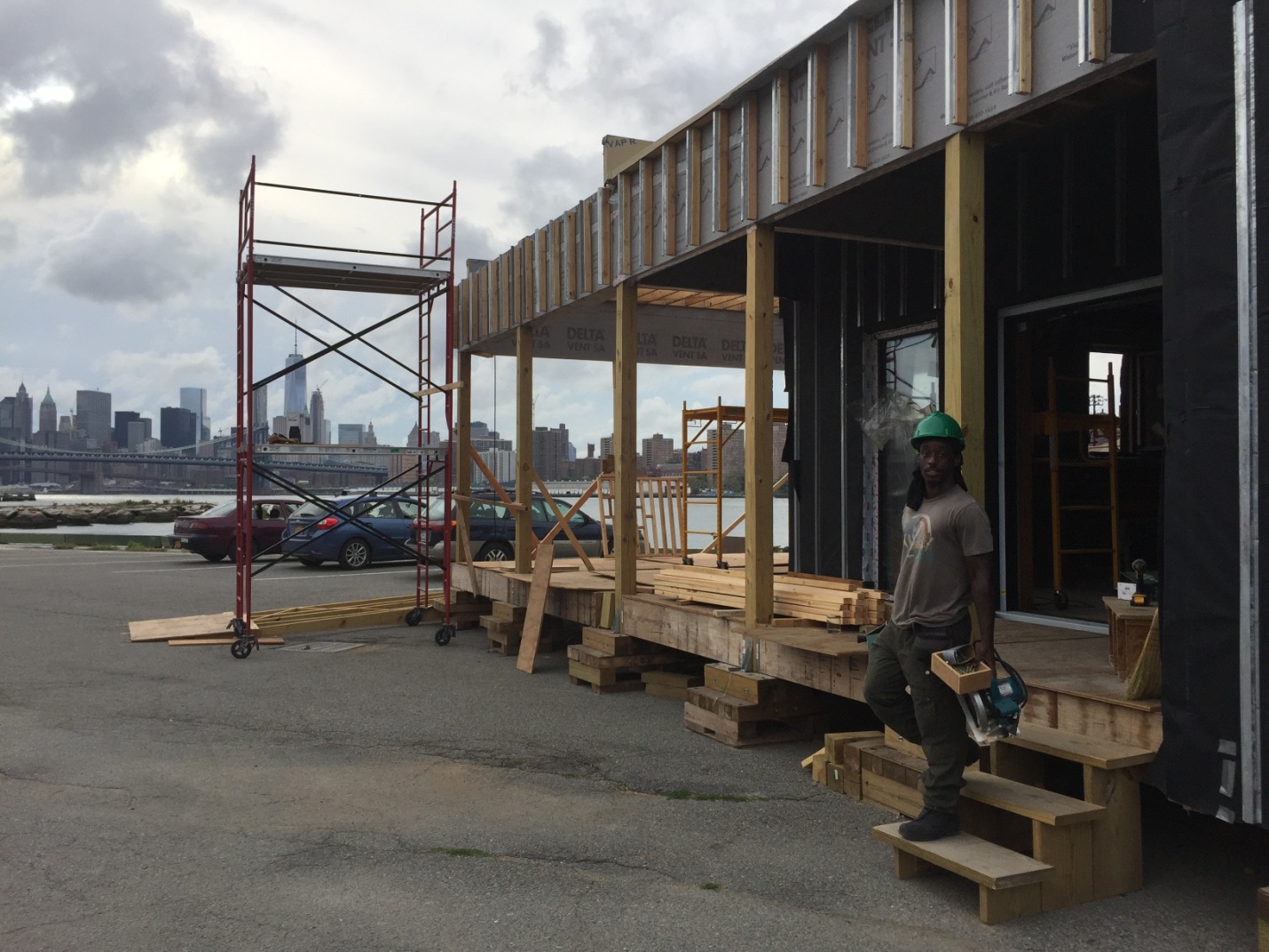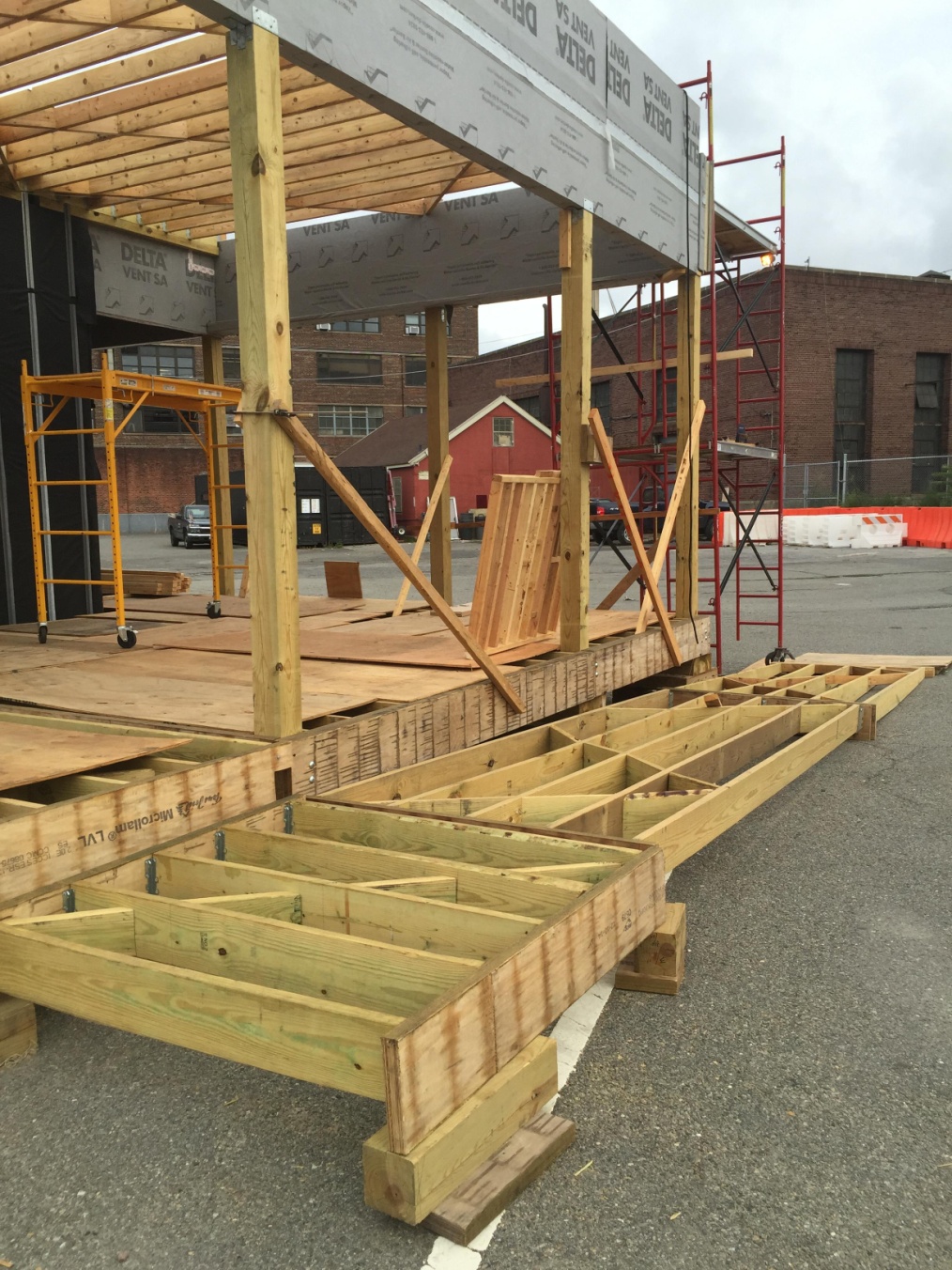- August 27, 2015
- 0 Comments
- In Accessible Design and Construction Existing Building Performance
- By
Last week, I had the opportunity to visit the DURAhome, New York City College of Technology’s entry for the 2015 Solar Decathlon. This project is currently nearing completion at the Brooklyn Navy Yard. Over the past 3 months, more than sixty students have toiled around the clock to finish construction in time for the contest, which will take place October 8-18 in Irvine, California. The Solar Decathlon is the U.S. Department of Energy’s biennial competition that challenges college and university student-led teams to design and build solar-powered net-zero homes that are affordable, energy-efficient, and aesthetically appealing.
TeamDURA’s focus was to create a prototype of post-disaster housing that is suited for New York City’s high-density urban environment, and could serve as a shelter in the aftermath of a catastrophic storm. As such, multifamily, multistory solutions were preferable to traditional single-family trailers, which have larger footprints. DURAhome consists of several prefabricated modules that can be packaged and shipped on standard-sized tractor trailers for quick response at low cost. These flexible modules can then be joined in standalone configurations or stacked for multifamily uses. Like the city, the DURAhome is diverse, urban, resilient, and adaptable.
When completed, DURA will be a 980 SF net-zero energy modular home with a side-mounted solar PV system that can provide approximately 5 kW of capacity (which is actually enough electricity to power a much larger house!). One of the competition’s main stipulations is that each home should have enough onsite solar generation capacity to be able to charge an electric car in addition to meeting its own energy load. Aside from the solar component, there were several other challenging design and construction guidelines to consider. For instance, since the competition will take place in California, the home must be built to both California earthquake code and NYC building code. The team also had to devise a way to construct the house so that it can travel across the country on the back of tractor trailers in six separate pieces and be re-assembled onsite. In order to maximize points for innovation, they used sustainable materials wherever possible, such as rock wool insulation, which is mold- and moisture-resistant, and even experimented with hempcrete, a green building material that is derived from the cannabis plant.
In fully embracing their vision for a resilient, adaptable urban approach to energy efficient home design, the team took on a number of additional constraints that none of the other teams were likely to face. Due to its stackable design, the team had to build DURAhome solidly enough to support the weight of three units placed on top of it. It is also the only home in the competition that will not utilize a roof-mounted PV system; thus, it is critical for the side of the house with the panels to face south when it reaches Irvine, which will ensure optimal exposure to the sun. Moreover, the students determined that if these solar panels were to withstand hurricane-force winds, they could not extend beyond a certain width from the siding. Finally, DURA is ADA-compliant with ramp access to its front door and porch areas.
The house ships off on its long journey to California in two weeks, where it will compete against thirteen other entries. Each team’s project will be judged in ten categories: Architecture, Market Appeal, Engineering, Communications, Affordability, Comfort Zone, Hot Water, Appliances, Home Entertainment, and Energy Balance. For the last Solar Decathlon, in 2013, Steven Winter Associates helped Middlebury College’s InSite house pursue a Platinum LEED for Homes certification.
It is truly an amazing feat to see what the New York City College of Technology team has accomplished in realizing a Solar Decathlon design that promotes a more sustainable and resilient New York City. We wish them all the best of luck at this year’s competition!


